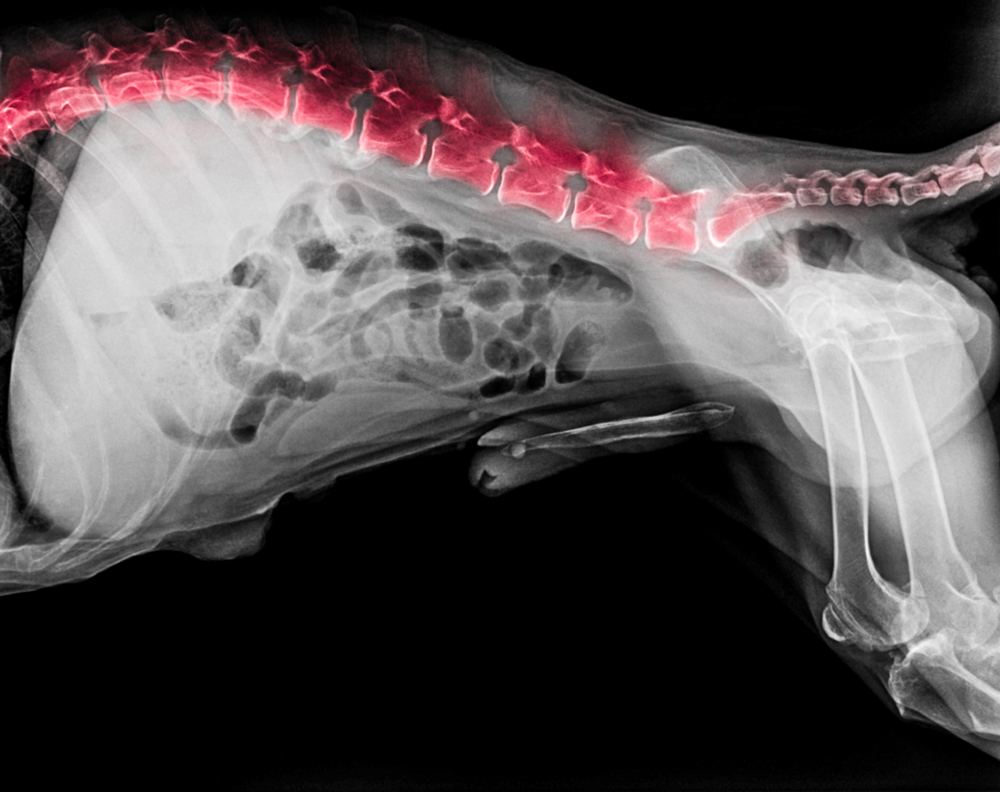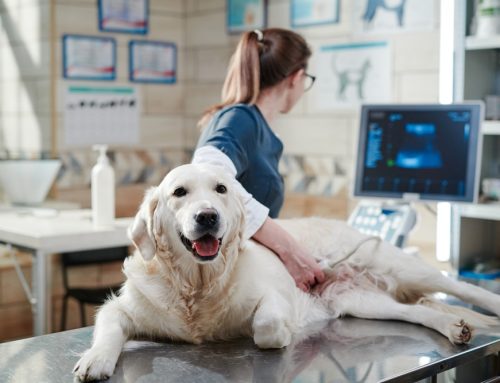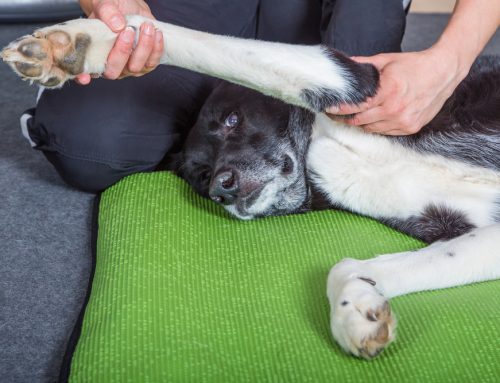Many pet owners are often surprised to learn their four-legged friend has developed intervertebral disc disease (IVDD)—a degenerative spinal condition that can suddenly or gradually develop. Depending on the condition’s severity, affected pets may experience pain, weakness, loss of coordination, or paralysis. Your pet’s IVDD diagnosis can be frightening, sparking you to consider your furry pal’s quality of life and symptom management, especially preventing further injury. IVDD does not have to limit your pet’s quality of life. Read our Neighborhood Veterinary Centers of Nederland team’s guide to your frequently asked questions about your pet’s IVDD diagnosis.
Question: What is intervertebral disc disease in pets?
Answer: Intervertebral discs are the spine’s shock-absorbing cushions—made of a compressible fibrous exterior and a soft gelatinous center—similar to a jelly donut. The discs sit between your pet’s spinal vertebrae, offsetting concussive forces that occur during movement (e.g., jumping down). IVDD develops when the discs deteriorate and rupture (i.e., herniate), pushing out and upward against the spinal cord. Because the spinal cord is enclosed within the vertebral column, the disc material has nowhere to go and compresses the spine, which alters nerve transmission, disrupting normal communication between the body, and the central nervous system and brain.
Q: What causes pet disc rupture?
A: Disc herniation is classified based on your pet’s clinical signs and health history, and how the disc herniates. Herniation types include:
- Hansen type 1 — Type 1 rupture occurs suddenly when a disc’s soft inner contents are ejected through the fibrous outer ring and into the spinal column. Although most common in small pets, type 1 herniation can also affect large-breed dogs.
- Hansen type 2 — Type 2 rupture affects large-breed dogs and generally has a gradual onset, as a disc’s fibrous outer ring bulges or pushes against the spine.
- Hansen type 3 — Type 3 herniation (i.e., missile disc), occurs when a disc’s gelatinous contents are forcefully and rapidly ejected into the spinal cord during a traumatic injury or intense physical activity, creating a sudden but impermanent compression. Affected pets may experience intense sudden pain or paralysis but recover without surgery.
Q: Are some pets more susceptible to IVDD?
A: Although IVDD can affect any pet, long-backed and chondrodystrophic (i.e., short-legged and long-backed) dogs have a higher risk. Dog breeds who have a higher IVDD risk include:
- Dachshund
- Corgi
- Basset hound
- Shih tzu
- Cocker spaniel
- Pekingese
- German shepherd dog
- Labrador retriever
- Doberman pinscher
Q: What are IVDD signs in pets?
A: IVDD’s presentation varies based on a rupture’s spinal location, compression amount, and the disc’s velocity. Keep an eye out for these neurologic signs:
- Hunched posture
- Low head carriage
- Reluctance to move or jump
- Unusual gait
- Ataxia (i.e., uncoordinated movements)
- Stumbling
- Limb dragging
- Unexplained lameness
- Paralysis affecting one or both hind limbs
Seek immediate veterinary attention if your pet experiences sudden weakness, loss of coordination, or paralysis. Emergency surgery can relieve compressive damage and restore mobility. However, to prevent nerve tissue death and permanent sensation and mobility loss, timing is crucial (i.e., usually a 48- to 72-hour window).
Q: Can pets recover from IVDD without surgery?
A: Your veterinarian’s treatment recommendations will depend on your pet’s clinical signs and neurologic assessment. If your pet has mild to moderate IVDD—with no significant neurologic impairment—conservative (i.e., nonsurgical) treatment may be effective. However, a risk remains that your pet’s condition could progress, and your veterinarian may recommend surgery.
Conservative management focuses on allowing the spine to recover through inflammation reduction and movement restriction. Pain medication and sedatives can relieve your pet’s discomfort, reduce swelling around the spinal cord, and ensure your four-legged friend stays calm and relaxed. To prevent your affected pet’s uncontrolled movements and running, keep your four-legged pal leashed when you take them outside.
Although many pets regain function, weak or paralyzed pets who do not respond to conservative treatment or are otherwise ineligible for surgery can still enjoy a good quality of life with assistive devices, such as wheelchairs and slings, and through rehabilitation therapy.
Q: Can pets live with IVDD?

A: IVDD is not a terminal condition unless severe compression and immobilization significantly reduce a pet’s quality of life. With veterinary-supervised treatment, vigilant at-home monitoring, and lifestyle management, most pets with IVDD live relatively normal lives. Depending on the severity of your pet’s IVDD signs, you can help support your four-legged friend’s spinal health, maximize their comfort, and reduce their recurrence risk by following your veterinarian’s treatment strategies, which may include:
- Rehabilitation therapy —Our Neighborhood Veterinary Centers of Nederland rehabilitation team provides therapeutic options for managing IVDD, including underwater treadmill, manual therapies, and strength and balance exercises.
- Weight management — Keep your pet lean to minimize spinal stress, improve their mobility, and reduce pain and arthritis inflammation.
- Low-impact activity — Discontinue jumping or high-intensity exercises such as playing Frisbee and high-speed fetch, or practicing agility training. Active pets can benefit from mental engagement exercises such as nosework, puzzle toys, and trick training.
- Ramps, stairs, and support — Ramps and pet steps can minimize daily shocks to your furry pal’s spine. To prevent your cat or small dog from jumping, lift them when they want to get up to or down from the couch or bed. If your pet is a long-backed dog, ensure you support their middle body while lifting them.
- Address flare-ups as needed — IVDD is a chronic condition and that is likely to recur to some degree. Monitor your pet’s signs, and seek veterinary care when necessary.
IVDD is a serious but manageable condition that has a generally positive prognosis. If you have additional questions about caring for your pet with IVDD, contact your trusted Southeast Texas veterinary team—Neighborhood Veterinary Centers of Nederland.







Leave A Comment